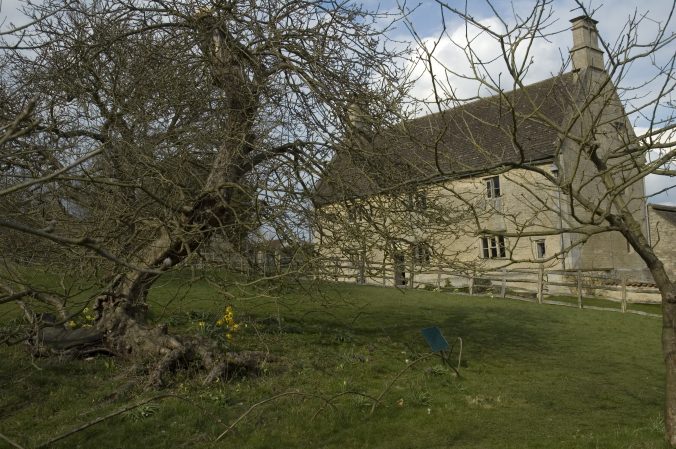An apple tree has grown at Isaac Newton’s mother’s Lincolnshire home for hundreds of years, honoured as the inspiration for his celebrated science.
In 1666 Isaac Newton asked: “Why should that apple always descend perpendicular to the ground? … Why should it not go sideways, or upwards, but constantly to the earth’s centre? Assuredly, the reason is, that the earth draws it.” With that the origin story of Newton’s theory of gravity was born.
Seventeenth century philosopher William Stukeley records the after dinner with this friend Isaac Newton, the two of them went outside where, “under the shape of some apple trees”. At the time Newton was staying at his mother’s home at Woolsthorpe Manor, Lincolnshire to avoid the ravages of the plague sweeping across London.
Indeed, an apple tree has now grown at Newton’s mother’s Lincolnshire home for hundreds of years, honoured as the inspiration for his celebrated science. When a storm blew the tree down in 1820 devotees came to see it lying in the orchard. Sketches were made of it and the broken wood was used to make snuff boxes and small trinkets. However, it remained rooted and re-grew from the base. This tree can still be seen at Woolsthorpe Manor, confirmed as being of the right age, and the United Kingdom Tree Council has certified it as one of 50 Great British Trees.
The fruit the tree bears is a rare variety called Flower of Kent, a greenish cooking apple that reddens as a ripens. Its seeds have travelled into orbit and back when British astronomer Tim Peake carried them to the International Space Station.
But trees sprouting from this tree’s seeds will not bear the same fruit. Only clones, grown from twigs or rootstock bear Flower of Kent apples. Cuttings grown from the famous Woolsthorpe tree have now been transported to dozens of locations on every continent but Antarctica. Offspring of the tree grace many a university campus and research park, reminding 21st century scientists that although physics may have evolved far beyond Isaac Newton, today’s ideas originated from his observations under an apple tree.
Isaac Newton … celebrated physicist and mathematician. His three laws of motion form the basic principles of modern physics, and resulted in the formulation of the law of universal gravitation.
Isaac Newton, was born 25 December 1642 at Woolsthorpe, Lincolnshire, England and died on 20 March 1727 in London. A celebrated physicist and mathematician, he was a prominent figure of the Scientific Revolution of the 17th century. His discovery of the composition of white light integrated the phenomena of colours into the science of light, and laid the foundation for modern physical optics. In mechanics, his three laws of motion, remain the basic principles of modern physics, and resulted in the formulation of the law of universal gravitation. In mathematics, he was the original discoverer of infinitesimal calculus. Newton’s Mathematical Principles of Natural Philosophy, 1687 was one of the most important single works in the history of modern science.
The Flower of Kent is a culinary pear-shaped apple, mealy, and sub-acid, and of generally poor quality by today’s standards. As its name suggests, this cultivar likely originated from Kent, England. Though now largely gone from commercial cultivation, a handful of Flower of Kent trees remain. Most, if not all, are said to descend from trees at Newton’s Woolsthorpe Manor, and nearly all currently in existence descend from a single tree in Kent.
